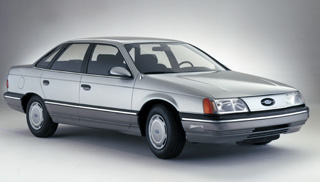
DETROIT – Looks can be deceiving when it comes to a vehicle’s aerodynamic attributes.
So say top designers from Detroit’s Big Three auto makers, speaking at an Automotive Press Assn. gathering as a prelude to the annual EyesOn Design Automotive Exhibition, a Michigan classic car show that supports eye research.
This year’s event, called “Aerodynamics and Streamlining – By Design,” will be held June 17 at the Eleanor and Edsel Ford estate in Grosse Pointe Shores.
In some cases, vehicles that look very aerodynamic, such as the iconic Lamborghini Countach, are not aerodynamic at all, despite their streamlined proportions, says Brandon Faurote, Chrysler Group’s director of advanced product design.
“You would think the Lamborghini Countach would be the most slick in the business, but it’s terrible for aero, so sometimes you’re fooled,” he says. “You have to do a lot work with engineers in the wind tunnel and try things. It’s not a formula where x+y = z.”
Fellow designer Ralph Gilles, vice president-Jeep and truck design studio, cites another example of form not always following function when describing an in-house advanced product design exercise.
A yet-to-be announced Dodge SUV was given two front ends: one that was streamlined and sleek and the other a more traditional, squared-off version. When the two were presented to a consumer test panel, the results were as expected, Gilles says.
“One nose was aerodynamic, very slick looking,” Gilles says, “and the other was our typical Dodge look, but it actually had superior aerodynamics…because we spent more time on it. “But everyone immediately assumed the slick nose was more aerodynamic.”
While the designers here don’t dispute the importance of aerodynamics and wind tunnel testing, some caution that relying too heavily on aerodynamics can lead to vehicles looking too similar.
“If you’re a slave to dynamics, you’re going to be driven towards a common solution,” says Bob Boniface, General Motors Corp.’s director of advanced design.

“I think shifts away from that, like the (Chrysler) 300, is a sign people want to express themselves, just like you do with the clothing that you wear. So I think (you need) a happy medium.”
One car this panel of experts agrees had a dramatic impact on the aerodynamic design of production vehicles is the Ford Taurus. Bowing in 1985, the Taurus is credited with helping pull Ford Motor Co. out of one of its darkest periods.
Critics initially mocked the car for its “jelly bean” styling, which stood out alongside the boxy vehicles typical of the era, but in the end it became one of the best-selling cars in history.
“In the 1980s, it was more the perception of aerodynamics,” says Moray Callum, Ford’s car design director. “I think with the original Taurus, relative to what was around at the time, there was the assumption that it was more streamlined and air moved around it much better. I’m not sure it did.”
Meanwhile, Boniface offers future designers three “valuable lessons” to ensure design maintains its relevancy. The first lesson is to “make sure the world wants to change before trying to change it.”

He cites the ‘34 Chrysler Airflow as an example of trying to force something on the buying public that it didn’t want. The Airflow was a marvel of its time, sporting superb aerodynamics and styling unlike anything else on the road.
The Airflow “was largely ignored by the buying population; nobody wanted it,” he says. “It proves that even a great leap forward cannot ignore the fashion of the day.”
Boniface’s second edict is “try not to do everything at once.”
The ill-fated ‘48 Tucker is a prime example of an auto maker trying to do everything at the same time and failing miserably.
“The Tucker was reinvention, plus invention, on top of innovation,” Boniface says. “And all the time (company founder Preston Tucker) was trying to sell shares of (the) car company. That means too many moving parts, and that doesn’t work either.”
Boniface issues a final and obvious guideline, but one that is sometimes overlooked. “The car still has to go from point A to point B,” he says.
“A brilliant design can be hampered by unproven technology. Likewise, unfamiliar, unproved technology in a familiar wrapper doesn’t work either,” he says, citing the ‘80s-era Oldsmobile diesels as an example.


